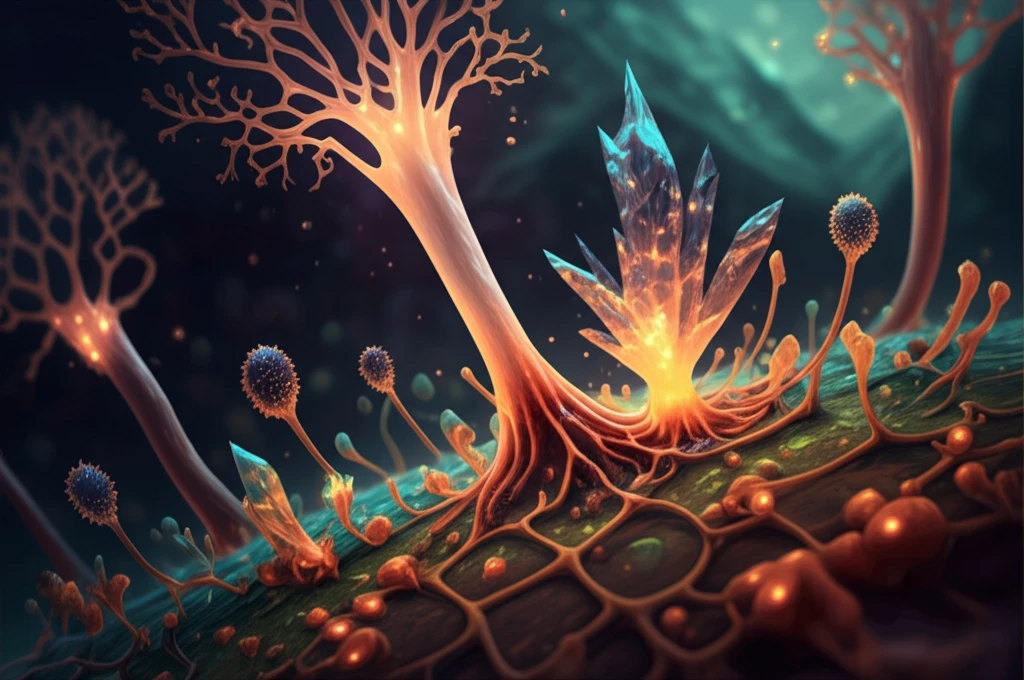
Unlock Nature's Hidden Potential: How Fungi Could Revolutionize Medicine
"Emericellins A and B, Novel Compounds from Endophytic Fungus, Show Promise in Fighting Fungal and Bacterial Infections"
In the ongoing quest for novel bioactive compounds, researchers are increasingly turning to plant endophytic fungi. These fungi, which reside within plant tissues without causing harm, represent a rich source of structurally unique natural products. They have attracted significant attention as potential sources of new medicines and agricultural treatments.
One of the most promising strategies for unlocking the potential of these fungi is the 'One Strain-Many Compounds' (OSMAC) approach. This method involves manipulating the fungi's environment—such as changing the growth medium, temperature, or even adding specific substances—to stimulate the production of a wider range of compounds. It’s akin to flipping different switches within the fungus's genetic makeup, leading to the creation of previously unseen molecules.
Recently, scientists have isolated two novel compounds, named Emericellins A and B, from an endophytic fungus called Emericella sp. XL029, which was found residing in the leaves of Panax notoginseng, a plant known for its medicinal properties. These compounds exhibit a unique chemical structure and have shown promising antimicrobial activity, opening up new avenues for fighting fungal and bacterial infections.
Emericellins A and B: Unveiling the Structure and Potential

Emericellins A and B belong to a class of compounds known as sesquiterpenoids. They feature an unprecedented tricyclo[4,4,2,1]hendecane scaffold, a complex arrangement of carbon rings that has never been seen before in natural compounds. This unique structure is what gives these molecules their potential for novel biological activities.
- Unique Structure: Tricyclo[4,4,2,1]hendecane scaffold not previously observed.
- Antimicrobial Activity: Shows moderate activity against fungal and bacterial strains.
- Source: Isolated from Emericella sp. XL029, an endophytic fungus.
- OSMAC Approach: Compounds discovered by manipulating growth conditions.
The Future of Fungal-Derived Pharmaceuticals
The discovery of Emericellins A and B highlights the vast untapped potential of endophytic fungi as sources of novel bioactive compounds. By employing innovative strategies like the OSMAC approach, researchers can unlock the hidden metabolic pathways of these microorganisms and discover new molecules with therapeutic potential. As drug resistance continues to rise, exploring these natural sources becomes increasingly crucial for developing the next generation of antimicrobial agents.
